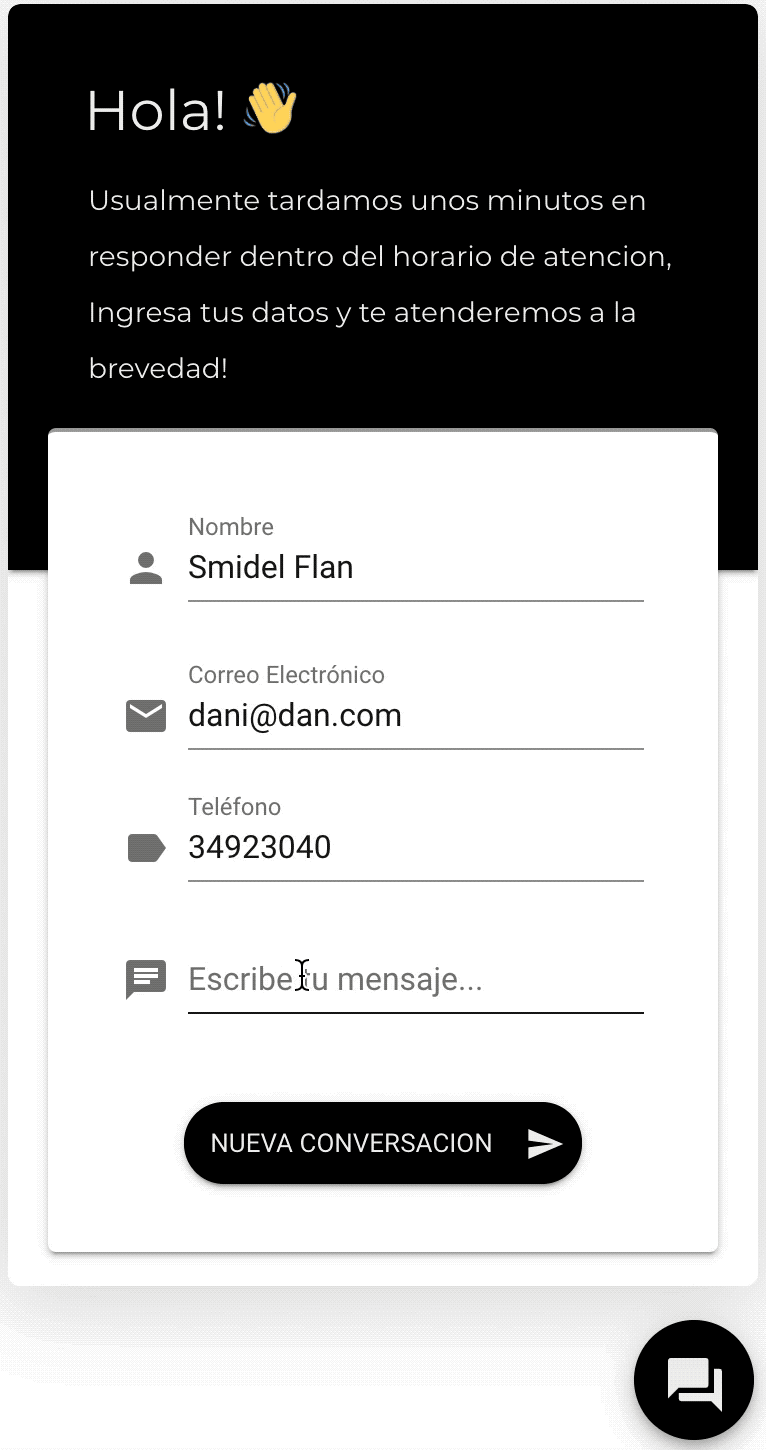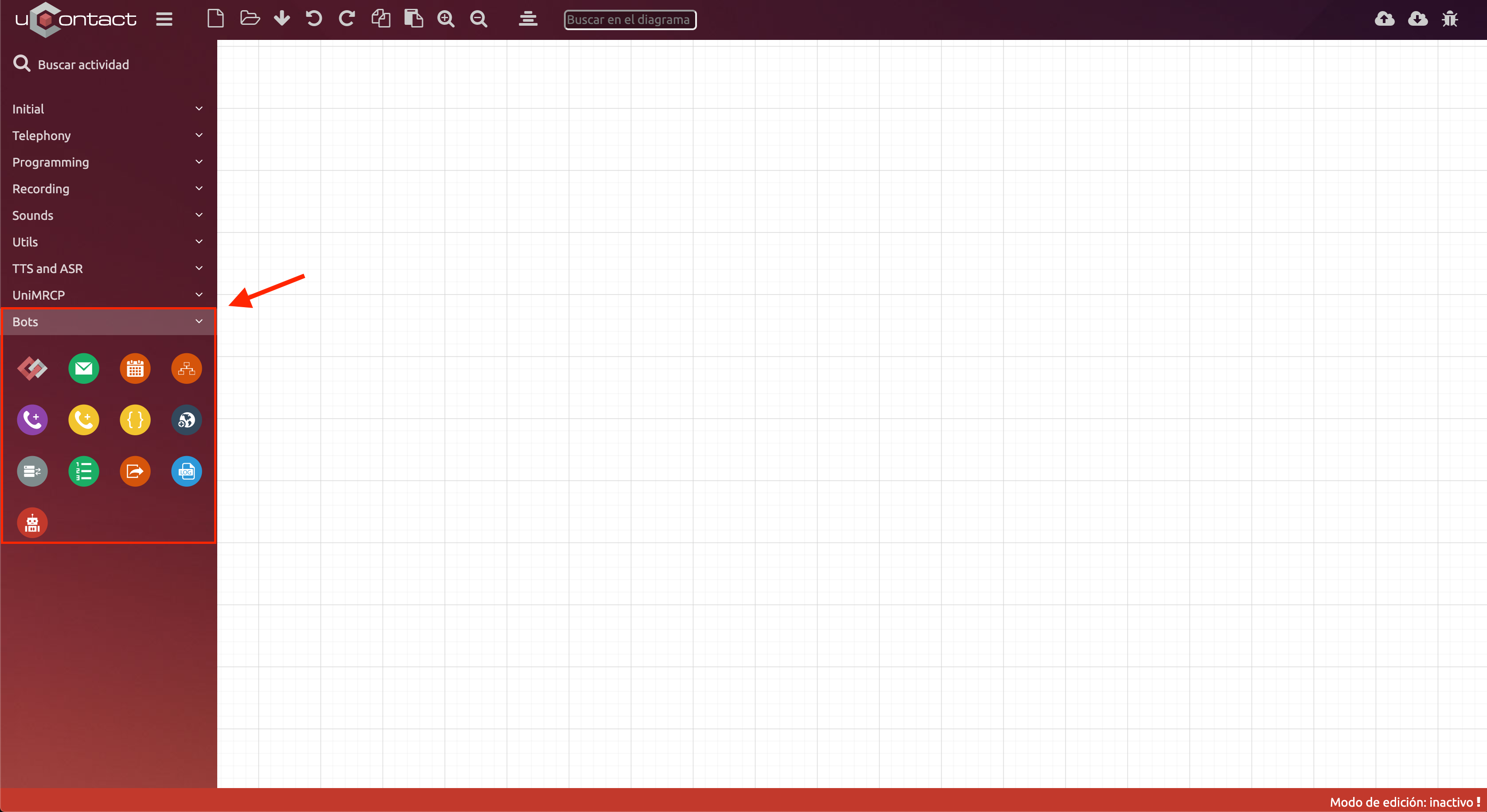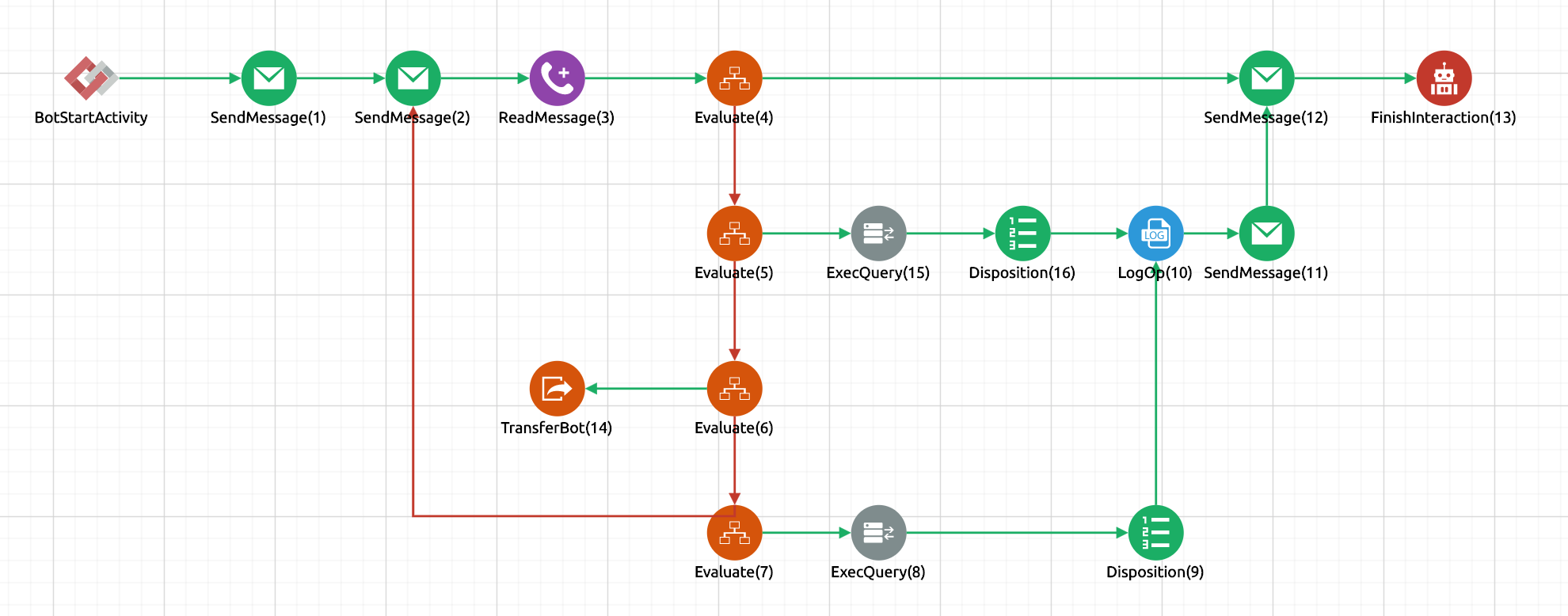uContact Bots
The bots allow the execution of flows that use a Javascript engine allowing you to perform almost any action if you have the necessary programming knowledge.
From simple answers to transfers, queries to the database or execution of web services are just some of the programmable activities for bots.
To get started with bots you will need to log into uContact with a Supervisor type user with permissions to use the Workflow Designer.
Bot development
This is the core, here its behavior is defined and that it is well created is essential for its implementation.
For this we go to the Workflow Designer, there a blank page will open and on the left, in the activities menu, we will see a dropdown called Bots located at the end of the list.
From here all the activities to be carried out by the bot will be taken.
To consider:
You should always start a bot with the BotStartActivity activity
You should always end a bot with the FinishInteraction activity
FinishInteraction should not be included after a TransferBot activity
Bot Activities
The activities allow to control the operation of the bot.
When you create the first flow for bots, the
botscontext will also be created, it will list all the flows created for bots.Before creating the first flow, the bots context will not exist.
See how to create your first bot flow or download an example flow and start working with them!
Bot Administration
Since update 6.275 in the configuration of SMS, WebChat and Messenger campaigns we will see a drop-down menu called Bot Name, when it is displayed all the created bot flows will be listed.
After selecting the desired bot for the campaign, simply press the Save button and your campaign will start working with bots!
The interactions that are open at the time of the change will not be affected by it, the same as those that are in the queue.
A campaign with bots does not need to include agents, the bot will take the interactions and distribute them to other more specific campaigns.
The interactions that are generated after making the change will start using the bot.
The chats with the bots are recorded and can be consulted in the recordings of their respective channel
The bots fulfill the function of an agent, this allows us to even make reports obtaining the bot's data.
In the message tables of each channel, the agent parameter is the name of the bot.
Create the first Bot
In this section we will see how to create a basic flow, as an example and practice, that contains the following actions:
Presentation - SendMessage
Options - SendMessage
Get reply - ReadMessage
Evaluate the answer - Evaluate
End interaction and make disposition - Disposition
Insert a user into a table - ExecQuery
Transfer to a campaign - TransferBot
Check the system version and save the variable - LogOp
Use the variable in a response and end the interaction - SendMessage
Simple bot example
This is the introduction to Bots.
Soon we will add posts and videos about it.














